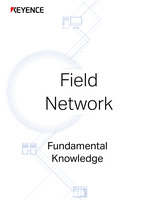BACnet
This section explains BACnet.
Overview
BACnet is a network developed based on the policies determined by the Standard Project Committee (SPC) held in the United States in 1987. Since that time, BACnet has been adopted mainly in the air-conditioning industry in the United States.
In Japan, the Institute of Electrical Installation Engineers of Japan has established its own standards and is now working on integrating these standards.
Wiring Method and Communication Protocol
Wiring method
BACnet specifies the protocol and defines some types of cables and related parts used for wiring.
Currently, Ethernet-based wiring is commonly used.
Communication protocol
The BACnet protocol is used. BACnet defines objects and services. Objects express various information as groups and information related to objects are called properties. For example, when an object is a car, its dimensions, such as total length, height, and width, are properties. Services are provided to read and write objects and related properties.
Characteristics
In BACnet networks, each device executes services to read and write data. It is commonly used as an integrated network for equipment such as air-conditioning devices, lighting devices, power supply devices, crime prevention devices, and elevators. Although the Institute of Electrical Installation Engineers of Japan is working on integrating the BACnet standards, there are still two Japanese versions of the BACnet protocol in Japan. Currently, users need to select one of three protocols, ASHRAE BACnet, IEIEJp, or IEIEJp-A, when they create programs.
- Company, product, and network names mentioned on this page are either trademarks or registered trademarks of their respective companies.
- Note that some information, such as applicable standards and specifications, may have changed since this page was published.
November 2015






